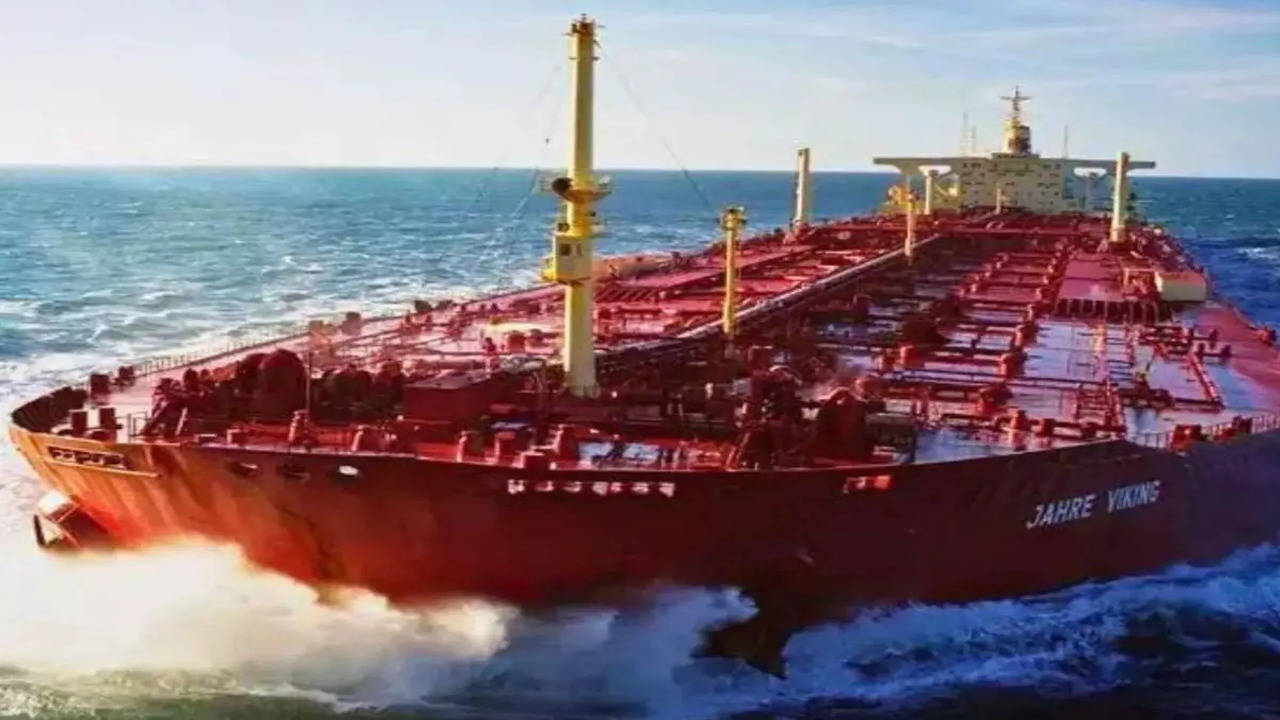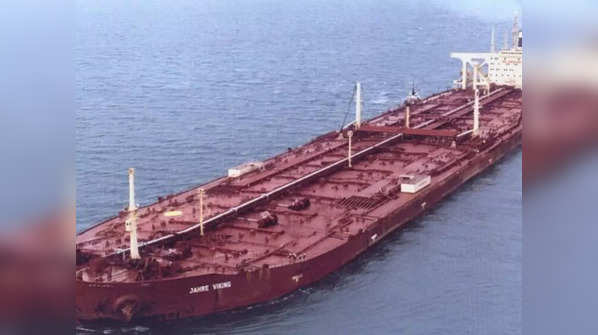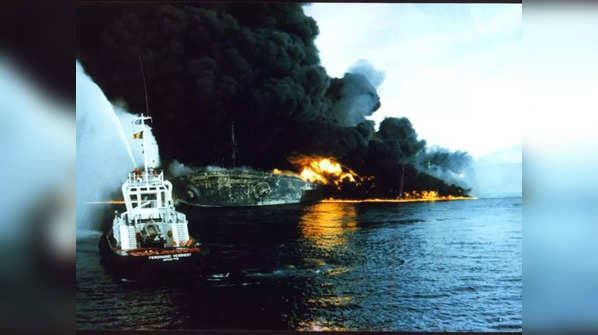
1/5
The Seawise Giant was the longest ship ever built
The Seawise Giant was a supertanker that held the record for being the longest and heaviest ship ever built. It was 100 meters longer than the longest active cruise ship currently, the ‘Icon of the Sea’ and 200 meters longer than the Titanic. Astonishingly it was also taller than the Empire State Building in New York. It was the largest ship in the world to have sunk, after being attacked by Iraqi forces during the Iran-Iraq War in 1988. However, the Seawise Giant was not destined to remain at the bottom of the sea. Salvaged, repaired, and rechristened multiple times, the Seawise Giant resumed service before meeting its final fate as scrap in 2010. This is the remarkable story of the Seawise Giant, the ship that survived war and time.

2/5
The birth of a giant
The Seawise Giant was originally ordered in 1974 by a Greek businessman, who wanted to create a massive oil tanker. However, he later backed out of the deal, leaving the Japanese shipbuilder Sumitomo Heavy Industries with a huge vessel without a buyer. In 1981, the ship was purchased by a Hong Kong tycoon, Tung Chao-yung, who decided to make it even bigger. He added several feet to the ship’s length and increased its capacity by more than 140,000 tons. The ship was named Seawise Giant, after Tung’s shipping company Seawise.The Seawise Giant was truly a colossal ship. It measured 1,504 feet in length and 225 feet in width, making it longer than the Empire State Building is tall. It had a deadweight tonnage of 564,763 tons, meaning it could carry more than 4 million barrels of crude oil. It was so large that it could not navigate the English Channel, the Suez Canal, or the Panama Canal. It also had a huge turning circle of 1.86 miles and a stopping distance of 5.6 miles. The Seawise Giant was not built for speed or maneuverability, but for sheer cargo capacity.

3/5
The attack and the sinking
The Seawise Giant’s main purpose was to transport crude oil between the Middle East and the United States, which it did for seven years. However, in 1988, it found itself in the middle of a war zone. On May 14, 1988, the Seawise Giant was carrying Iranian oil and was moored off Larak Island in the Strait of Hormuz, when it was attacked by Iraqi fighter jets. The jets fired Exocet missiles at the ship, causing massive explosions and fires. The Seawise Giant was hit by several missiles and suffered extensive damage. The crew abandoned the ship and escaped with their lives, but the ship sank to the bottom of the sea.The Seawise Giant was considered a total loss and was declared unsalvageable by its insurers. It remained submerged for several months, until a Norwegian company decided to take a chance and try to raise it. The company, Norman International, was led by a veteran salvager named Anders Jahre, who had a reputation for taking on risky projects. Jahre believed that the Seawise Giant could be saved and restored, despite the severe damage and the depth of the water.
Salvaging the ship
In late 1988, Jahre and his team began the operation to salvage the Seawise Giant. They used powerful pumps to remove the water and oil from the ship’s tanks and hull, and then attached giant airbags to lift the ship to the surface. The process took several weeks, and was complicated by the ongoing war and the threat of mines and attacks. Finally, in March 1989, the Seawise Giant was refloated and towed to a dry dock in Dubai for inspection and repair.The repair work was a monumental task, as the ship had suffered extensive structural and mechanical damage. The ship’s engine room, bridge, and accommodation were destroyed, and the hull was riddled with holes and cracks. The ship also had to be decontaminated from the oil and seawater that had corroded its parts. The repair work took more than two years and cost more than $100 million, but Jahre was determined to bring the ship back to life. He renamed the ship Happy Giant, after his own nickname.
5/5
Return of the giant and eventual retirement
In 1991, the Happy Giant was ready to resume service as an oil tanker. It was chartered by various companies and countries, and continued to transport crude oil around the world. In 1991, it was renamed again as Jahre Viking, after its owner. In 2004, it was converted into a floating storage and offloading unit (FSO), and was moored at the Al Shaheen oil field in Qatar. It was renamed once more as Knock Nevis, after a Norwegian village. In 2009, it was sold to an Indian company and renamed Mont, for its final voyage to India, where it was to be scrapped.The Mont arrived at the Alang shipbreaking yard in Gujarat, India, in December 2009. It was beached on the shore and dismantled by hundreds of workers, who cut the ship into pieces and sold the scrap metal and parts. The scrapping process took about a year, and marked the end of the Seawise Giant’s long and eventful journey. The ship that was once the largest and heaviest in the world, and that had survived war and time, was gone forever.Image: History Defined